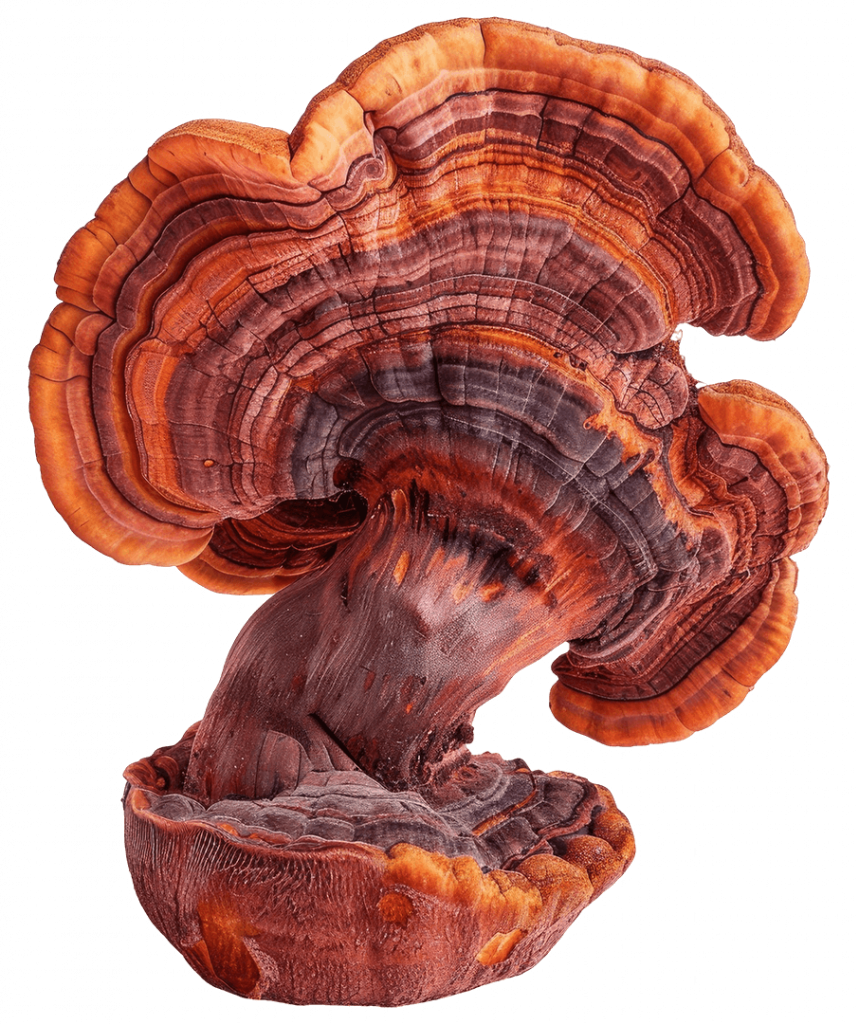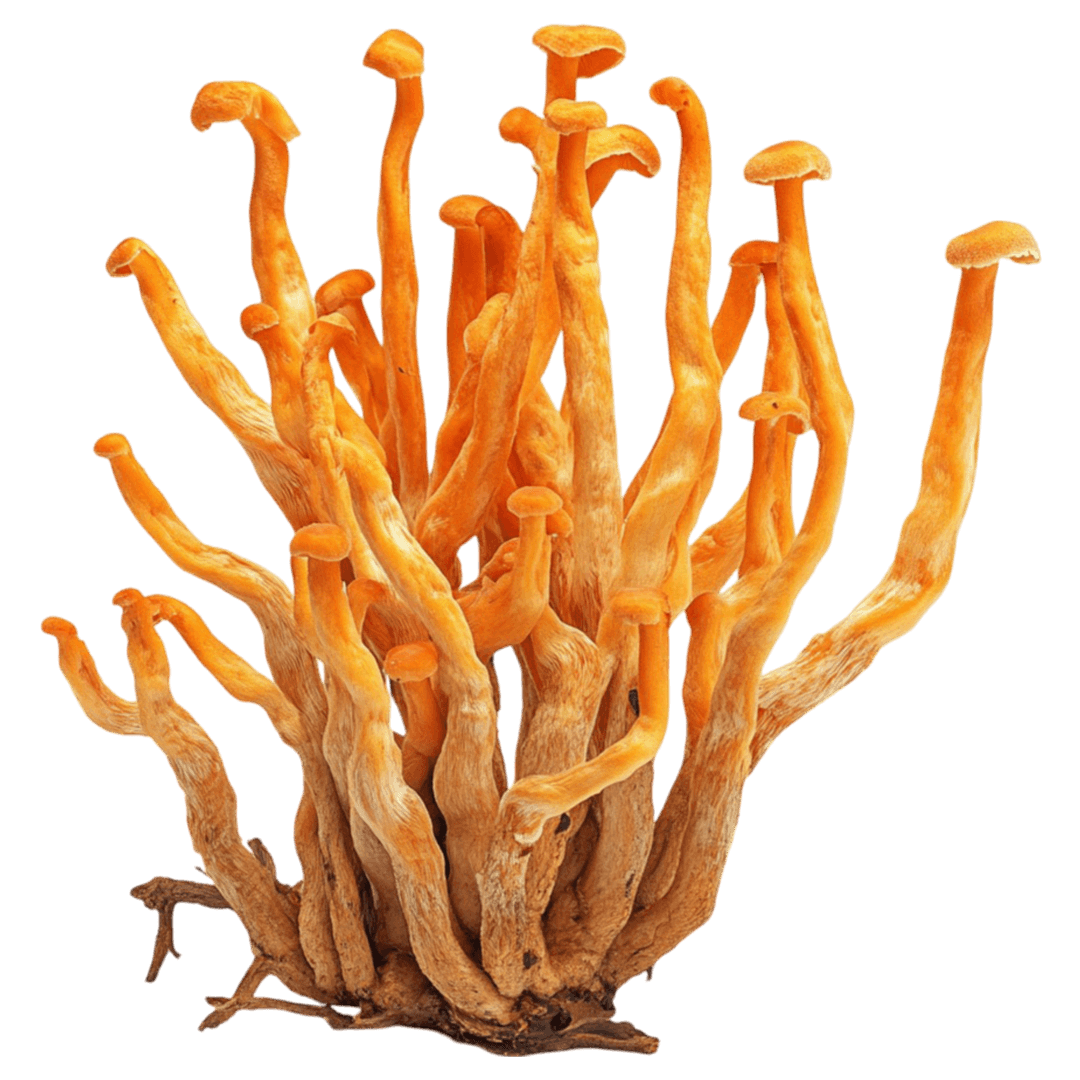Bioactives Compounds




Bioactive compounds give the powers to functional mushrooms. These compounds are completely natural and can’t be found elsewhere. Each one, when consumed in the right quantities, can do wonders to your body and mind. Learn what the global scientific community of researchers have discovered”. “Knowledge is power”
Hericenones are aromatic compounds primarily found in Hericium erinaceus (Lion’s Mane mushroom). These compounds play a critical role in promoting nerve regeneration by stimulating the production of Nerve Growth Factor (NGF) in the brain. NGF is essential for the survival and maintenance of neurons, making hericenones valuable for cognitive health and neurodegenerative conditions.
These compounds are characterized by their benzyl phenol structures with hydroxyl and alkyl substituents. These molecules contain polar functional groups that interact with enzymes involved in Nerve Growth Factor (NGF) synthesis. The specific molecular structure enhances their bioavailability in neural tissues, making them highly effective in supporting neurogenesis and cognitive health.
Additionally, hericenones exhibit anti-inflammatory and antioxidant properties, further supporting brain and overall nervous system health.
Erinacines are diterpenoids with a unique cyathane skeleton. This tricyclic structure, featuring oxygenated functional groups such as hydroxyls and ketones, allows erinacines to cross the blood-brain barrier efficiently. Erinacine A, a key variant, has a molecular backbone optimized for stimulating NGF production and supporting synaptic repair. Its hydrophobic regions improve lipid solubility, aiding in neural membrane interactions.
Cordycepin, also known as 3′-deoxyadenosine, is a nucleoside analog derived from Cordyceps militaris and Cordyceps sinensis. It exhibits significant bioactivities, including anti-cancer, anti-inflammatory, and anti-microbial effects. Cordycepin inhibits RNA synthesis in certain pathogens and cancer cells, disrupting their replication processes. It also supports energy metabolism and endurance by improving oxygen utilization and ATP production, making it popular among athletes and for respiratory health. The hydrophobic and polar regions of cordycepin enhance its ability to interact with ATP-binding enzymes, improving its efficacy in metabolic pathways and cellular respiration.
Adenosine is a nucleoside composed of adenine and ribose, playing a crucial role in cellular energy transfer as a component of adenosine triphosphate (ATP) and adenosine monophosphate (AMP). It is also involved in signal transduction as part of cyclic adenosine monophosphate (cAMP), which regulates numerous physiological processes. In functional mushrooms like Cordyceps, adenosine contributes to enhanced oxygen utilization, improved cellular energy production, and increased endurance. Its ability to modulate adenosine receptors makes it a promising compound for promoting relaxation, reducing inflammation, and supporting cardiovascular health.
The molecular structure of adenosine includes a purine base linked to a ribose sugar through a β-N9-glycosidic bond. This configuration allows it to interact with enzymes and receptors, influencing energy metabolism and neural signaling pathways. In functional mushrooms, adenosine is valued for its adaptogenic properties, aiding the body’s ability to manage stress and improve physical performance.
Polysaccharide K, commonly known as PSK or Krestin, is a protein-bound polysaccharide extracted from Trametes versicolor (Turkey Tail mushroom). It is composed of beta-glucans with a unique molecular structure that includes a protein fraction, enhancing its bioavailability. PSK is renowned for its potent immunomodulatory properties, stimulating natural killer (NK) cells, T-cells, and macrophages to strengthen the body’s immune response.
Clinically, PSK has been widely studied for its anti-cancer effects, particularly in adjuvant therapy for gastrointestinal and breast cancers. It works by inhibiting tumor growth, preventing metastasis, and promoting apoptosis in cancer cells. Its ability to enhance the efficacy of chemotherapy and reduce treatment side effects has made it a cornerstone in integrative oncology. The molecular structure, characterized by branched beta-glucans, plays a key role in its immune-enhancing activity.
Polysaccharopeptide, or PSP, is another protein-bound polysaccharide derived from Trametes versicolor. Similar to PSK, PSP is composed of beta-glucans but differs in its specific sugar and peptide composition. PSP is known for its broad-spectrum immunomodulatory effects, including the activation of dendritic cells and stimulation of cytokine production, which are critical for adaptive immunity.
PSP has been investigated for its anti-cancer, anti-inflammatory, and antiviral properties. It has shown promise in supporting the immune system during chronic illnesses, including hepatitis and autoimmune diseases. The unique interaction between its polysaccharide and peptide components enhances its water solubility and cellular uptake, making PSP a highly effective functional compound.
Ergothioneine is a sulfur-containing amino acid that acts as a potent antioxidant. Found in mushrooms like Shiitake and Maitake, as well as in Inonotus obliquus (Chaga), ergothioneine is synthesized by fungi and absorbed efficiently by humans through the OCTN1 transport system. Its molecular structure, which includes a sulfur group attached to a histidine derivative, provides exceptional stability against oxidative stress.
Ergothioneine protects cellular components such as DNA, proteins, and lipids from damage caused by free radicals. It also has anti-inflammatory properties and supports mitochondrial health by scavenging reactive oxygen species (ROS). The compound has gained recognition for its potential to reduce the risk of chronic diseases, including neurodegenerative disorders, cardiovascular issues, and aging-related conditions.
Lentinan is a beta-glucan extracted from Lentinula edodes (Shiitake mushroom) and is composed of a β-(1→3)-linked backbone with β-(1→6)-linked side chains. This unique branching pattern enhances its immunomodulatory properties, making it a powerful agent for activating macrophages, T-cells, and other immune components.
Lentinan is widely used in cancer therapy as a biological response modifier. It works synergistically with chemotherapy to inhibit tumor growth, enhance immune surveillance, and improve patient outcomes. Additionally, lentinan has been studied for its antiviral effects, showing promise in combating viral infections by boosting the innate immune system.
Betulinic acid exhibits anti-inflammatory, anti-viral, and anti-cancer effects. Its triterpenoid structure allows it to target tumor cells while sparing healthy tissue.